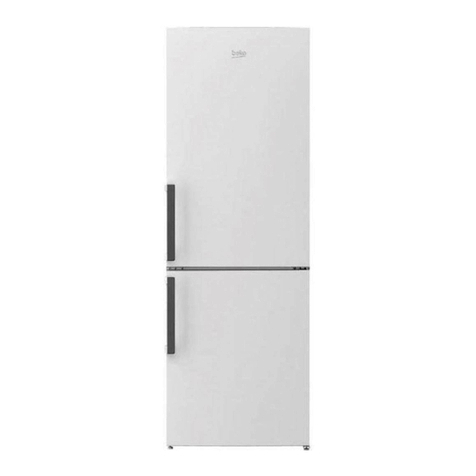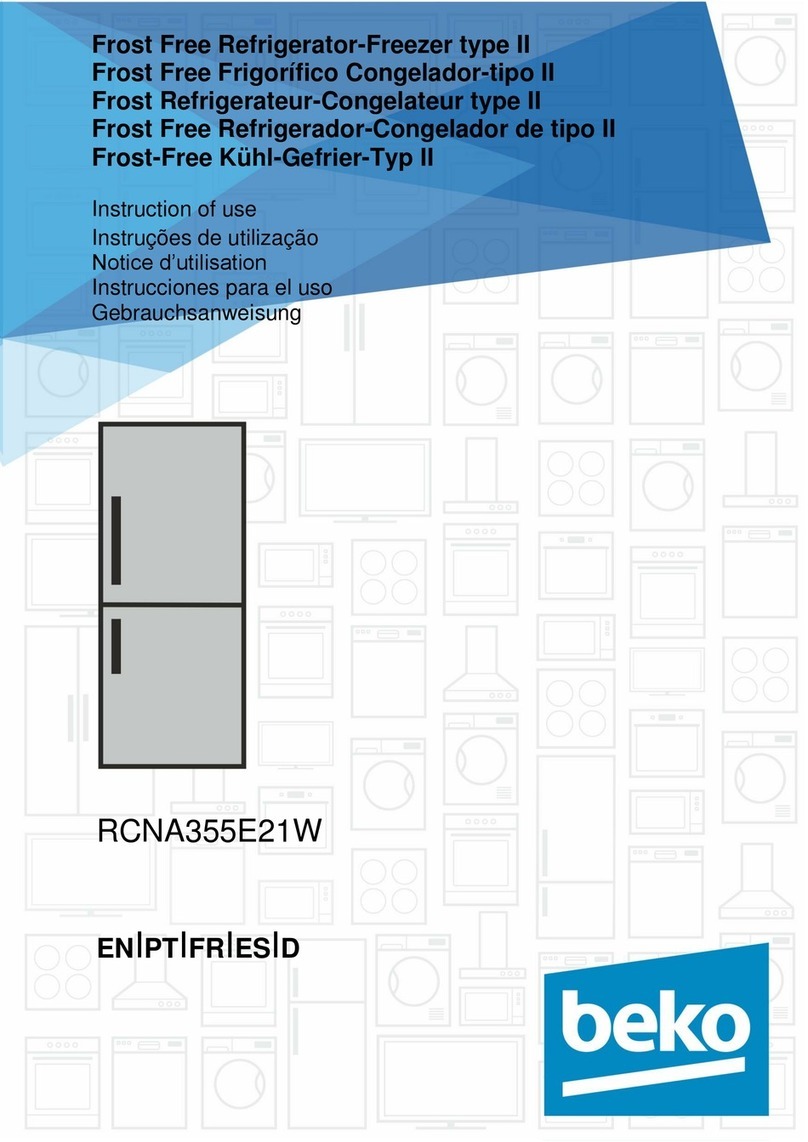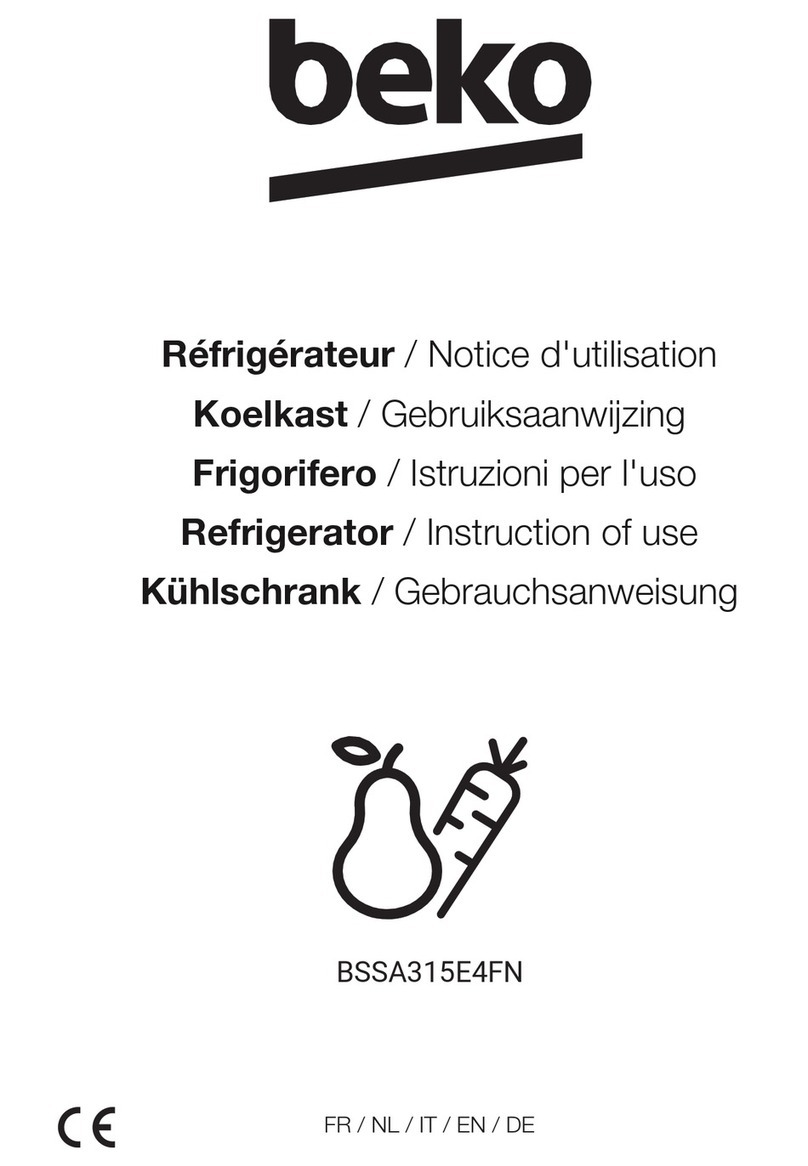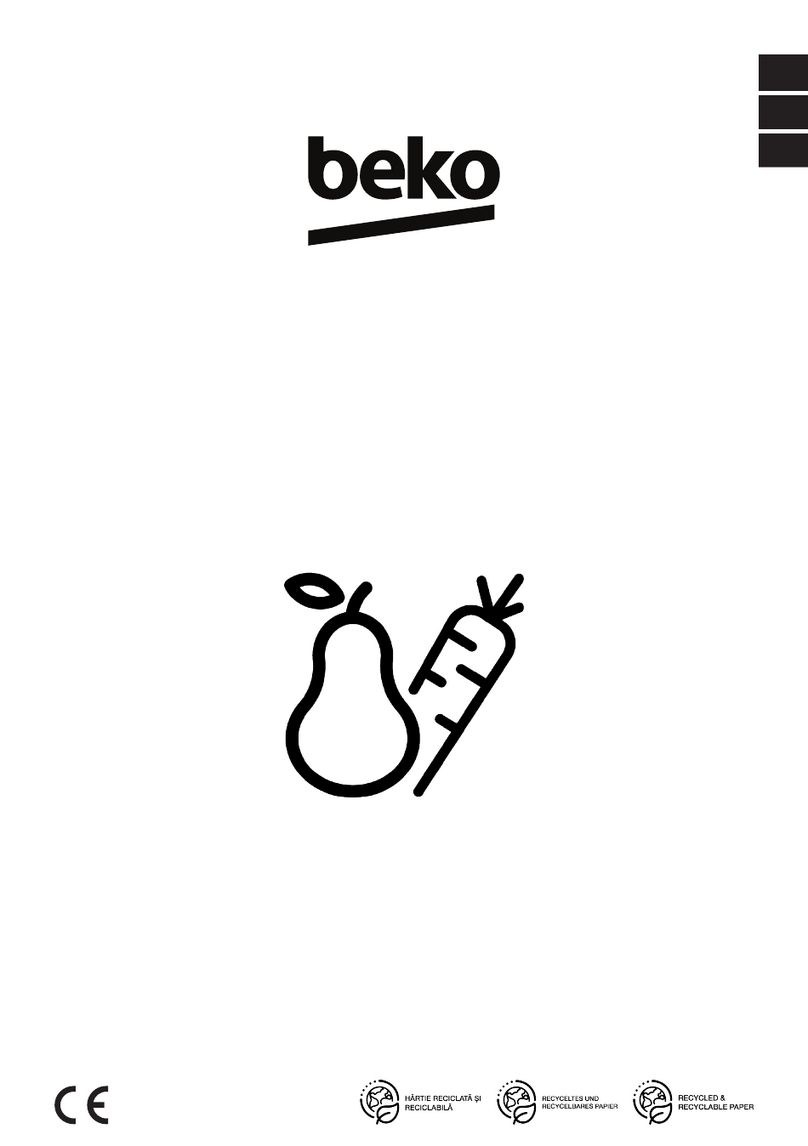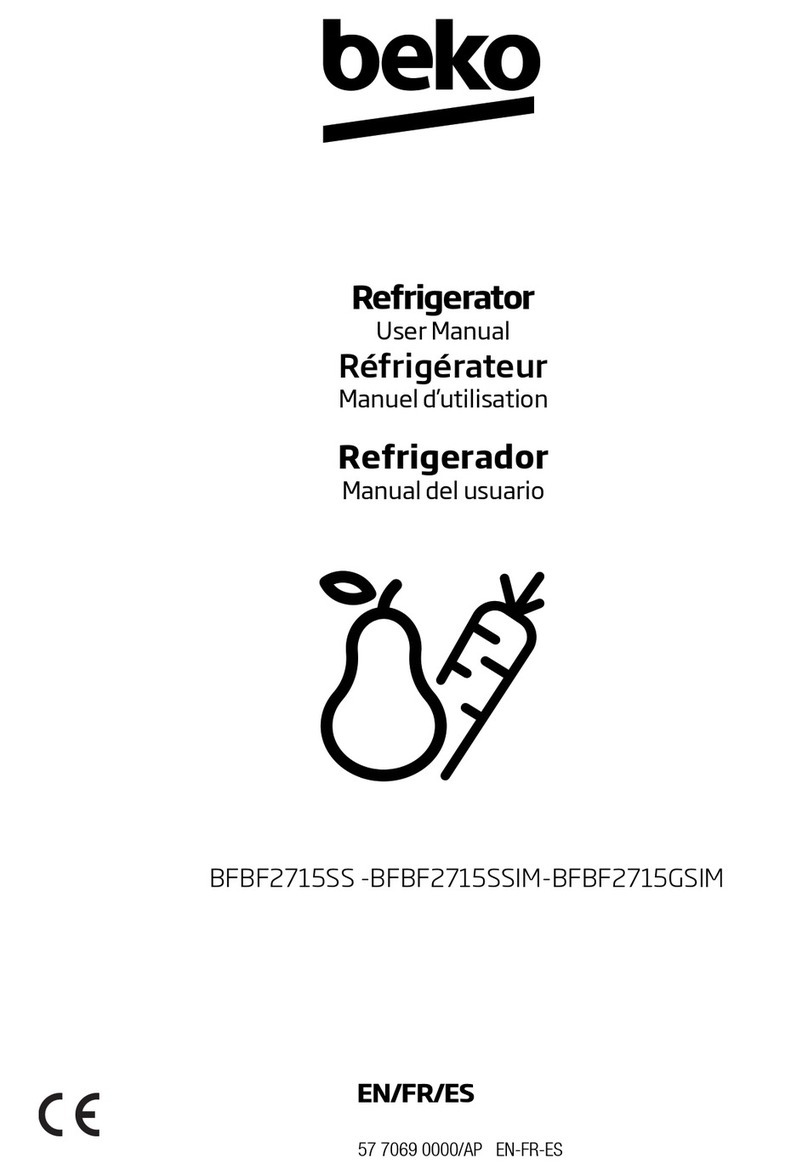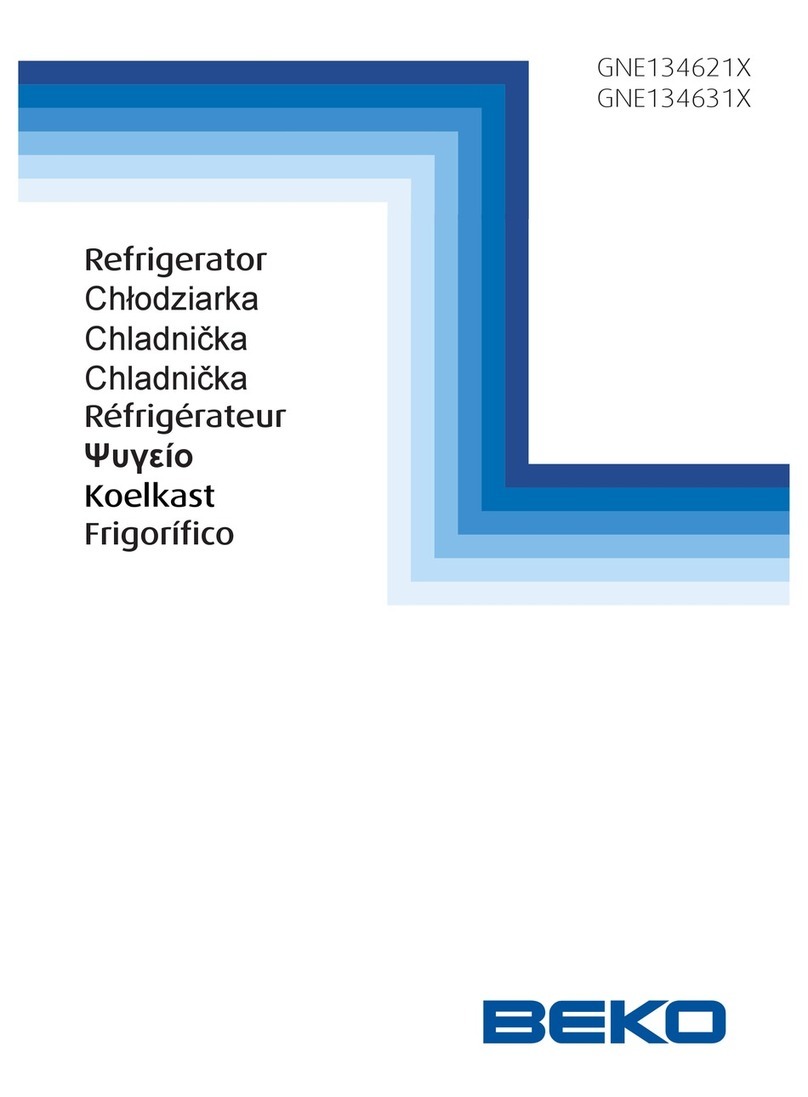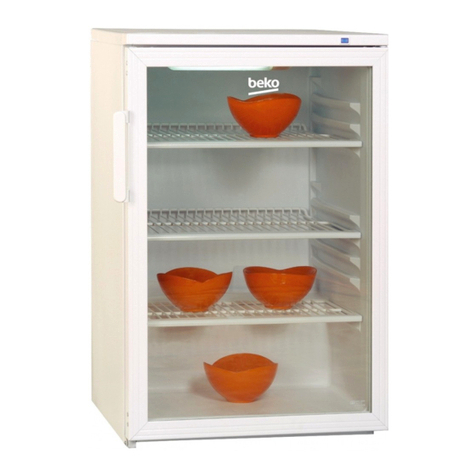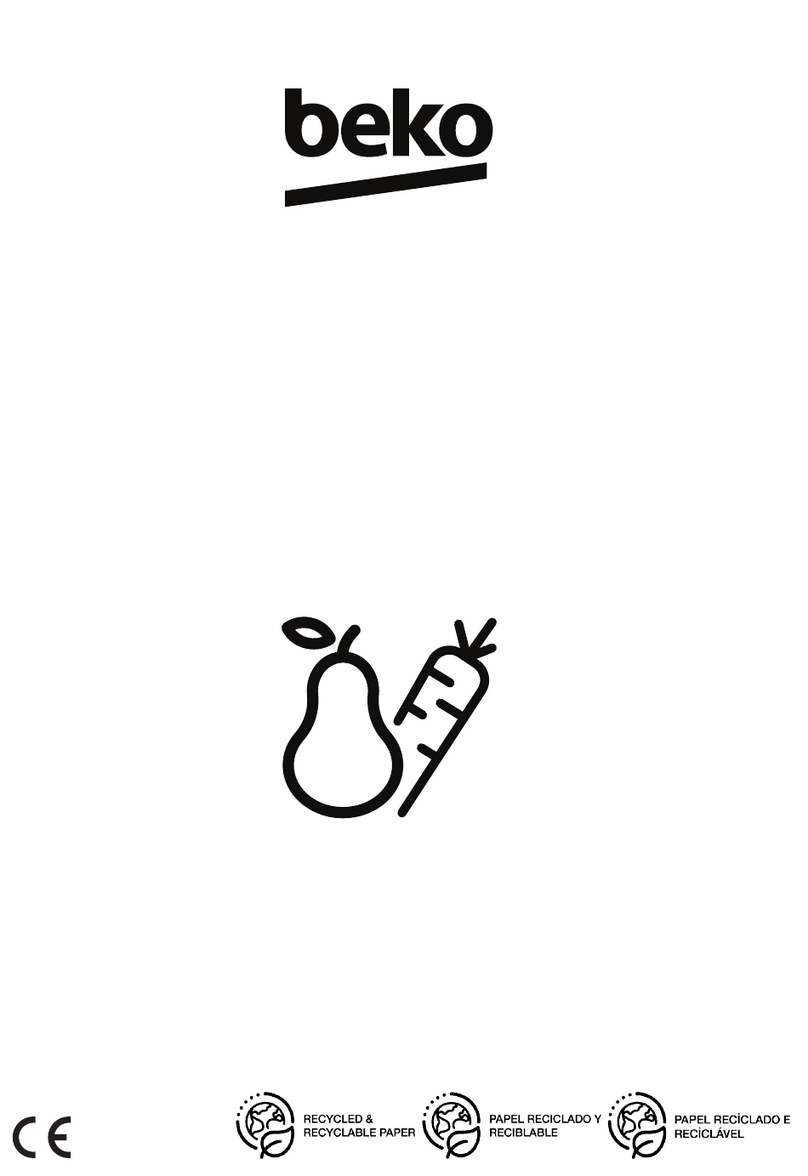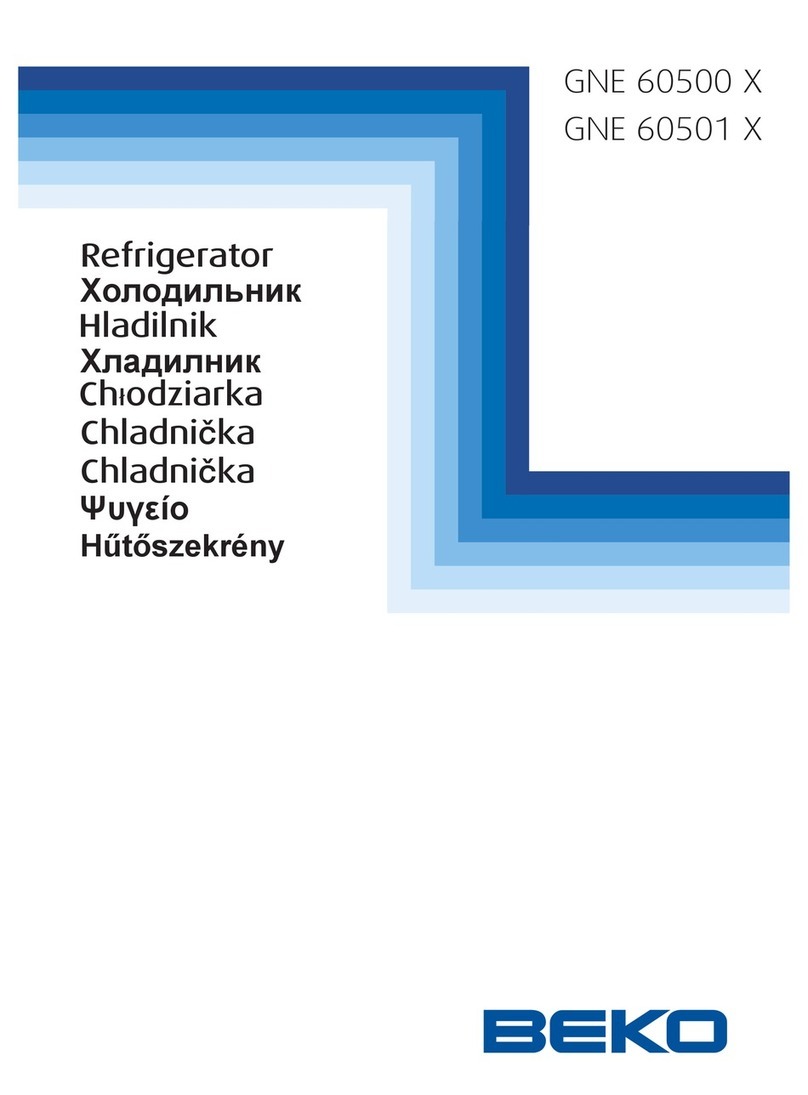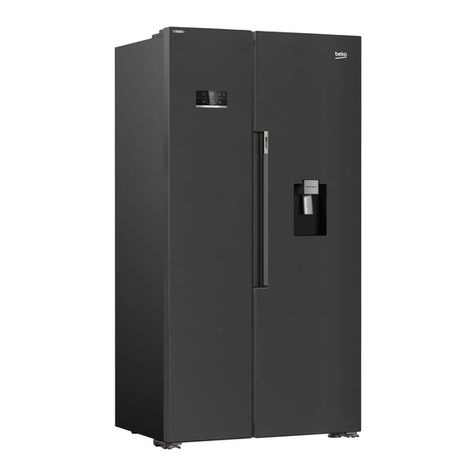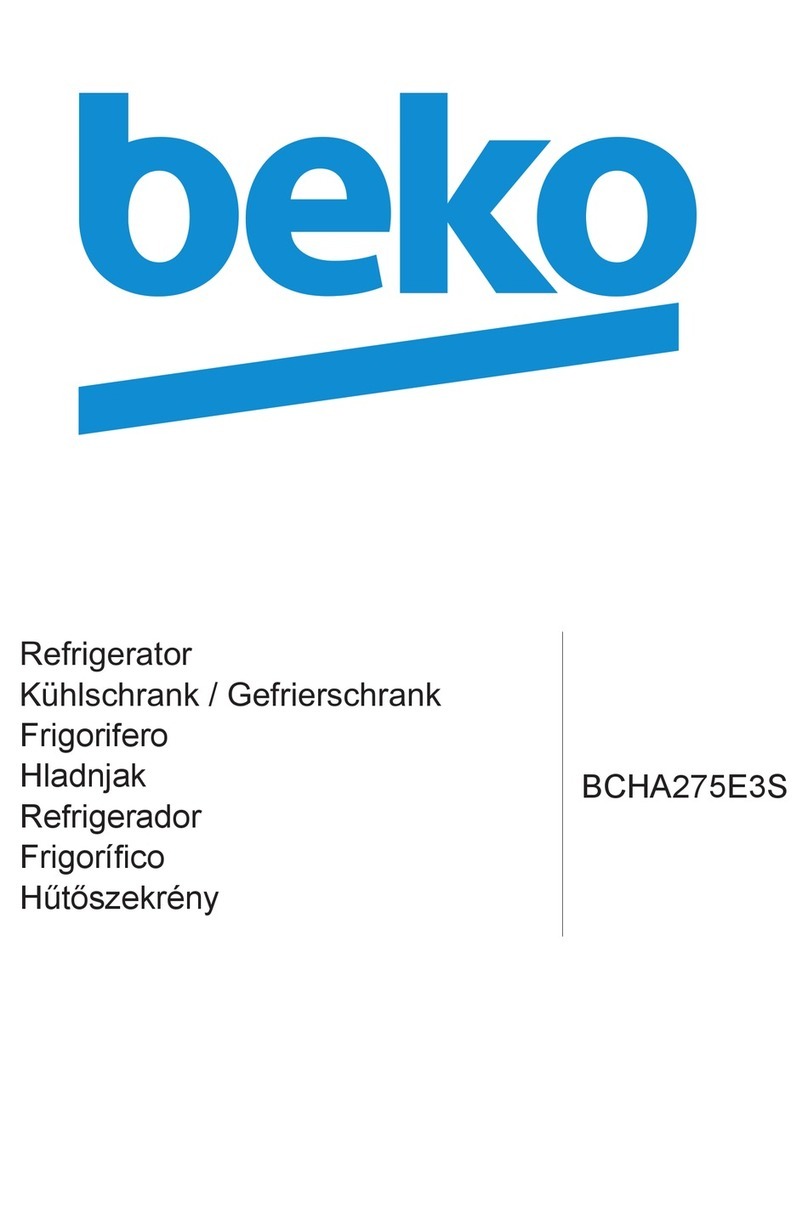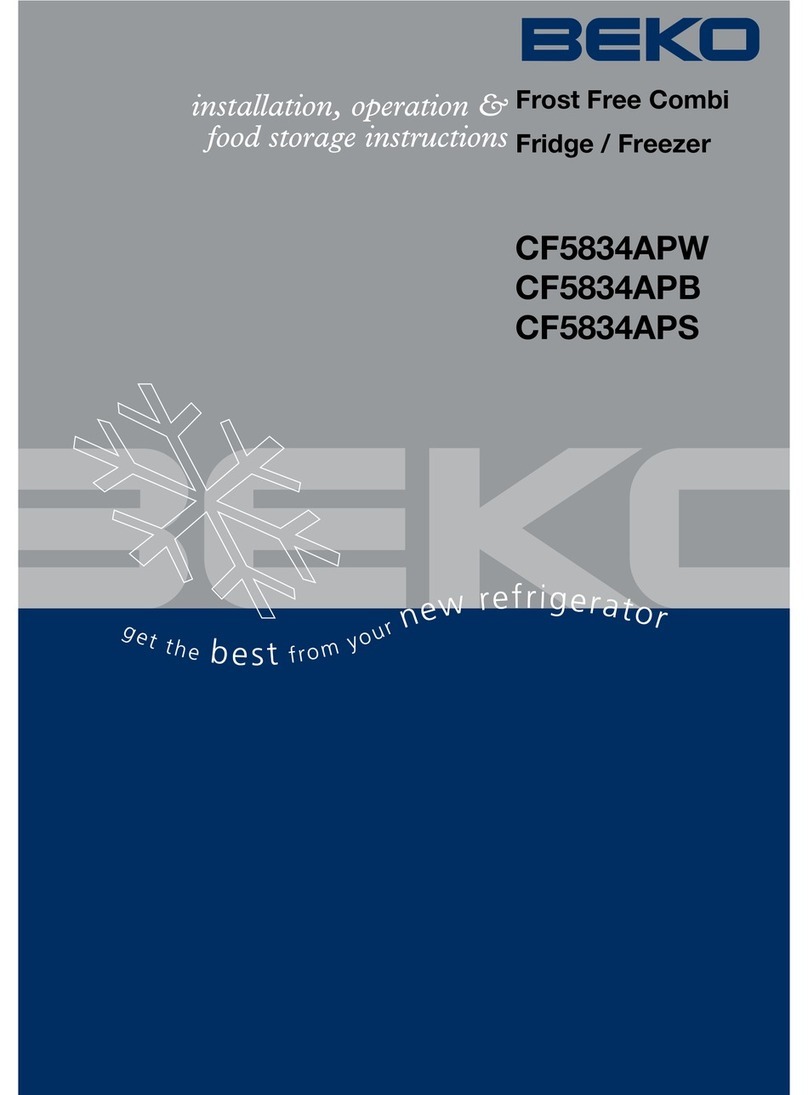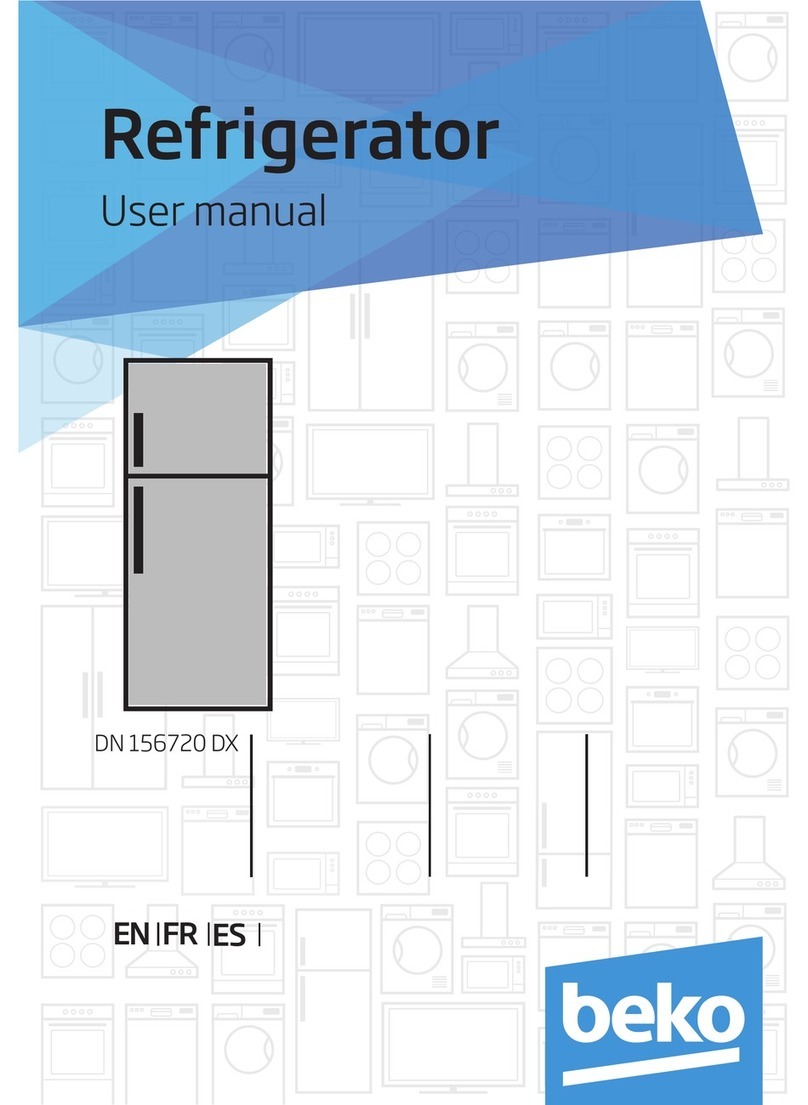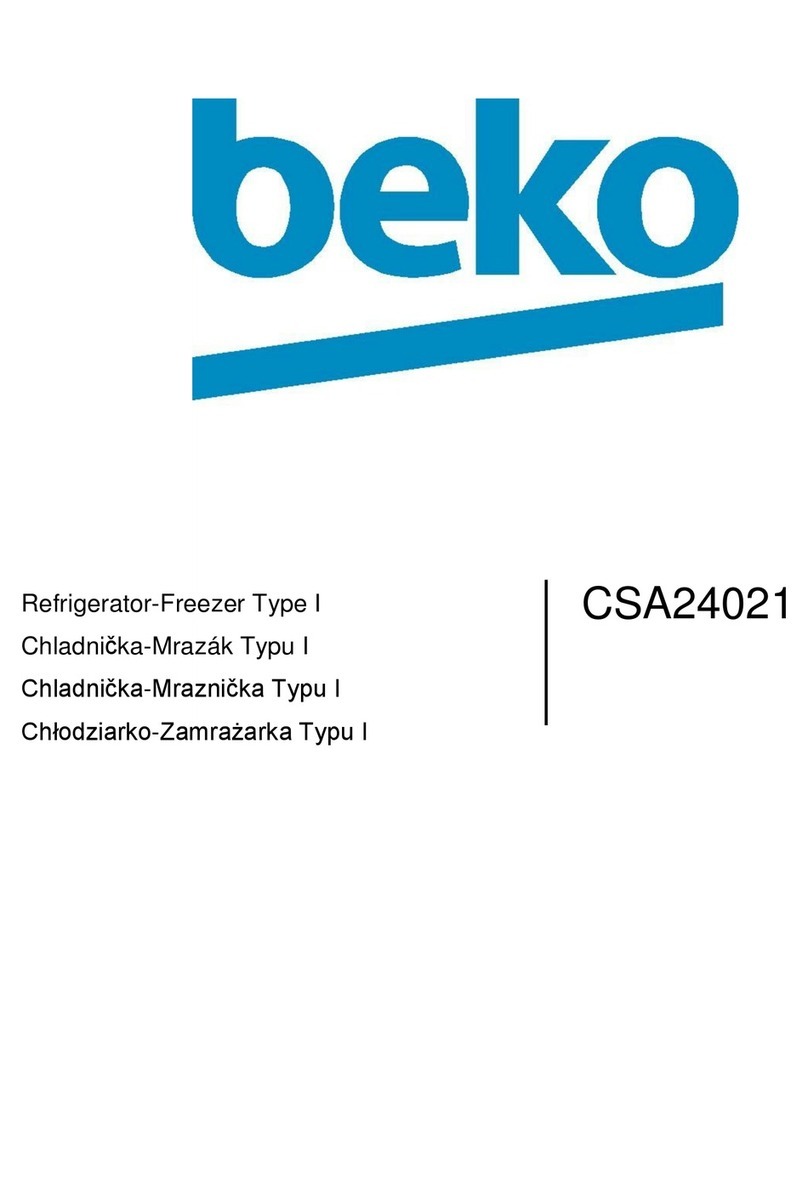
In order to ensure a normal operation of your refrigerating appliance, which uses a completely environmentally friendly refrigerant the R600a
(flammable only under certain conditions) you must observe the following rules:
Do not hinder the free circulation of the air around the appliance.
Do not use mechanical devices in order to accelerate the defrosting, others than the ones recommended by the manufacturer.
Do not destroy the refrigerating circuit.
Do not use electric appliances inside the food keeping compartment, other than those that might have been recommended by the
manufacturer.
УВАГА!
Для того, щоб забезпечити нормальну роботу Вашого холодильника, в якому використовується охолоджуючий реагент R600a,
абсолютно нешкідливий для навколишнього середовища (займається лише за певних умов), Вам
Необхідно дотримуватися наступних правил..
Не створюйте перепон для вільної циркуляції повітря навколо холодильника.
Не користуйтесь жодними механічними пристроями та інструментами для видалення льоду під час розморожування холодильника,
окрім тих, що рекомендовані виробником.
Не допускайте пошкодження охолоджуючого контура.
Не встановлюйте всередину холодильного відділення, де зберігаються продукти, жодних електричних пристроїв, окрім тих, що
рекомендовані виробником.
ВНИМАНИЕ
Для того, чтобы обеспечить нормальную работу Вашего холодильника в котором используется охлаждающий реагент R600a,
совершенно безвредный для окружающей среды (воспламеняющийся только в определенных условиях), Вам следует соблюдать
следующие правила.
Не создавайте препятствий для свободной циркуляции воздуха вокруг холодильника.
Не пользуйтесь никакими механическими приспособлениями и инструментами для удаления льда при размораживании
холодильника, коме тех, которые рекомендованы изготовителем.
Не допускайте повреждения охлаждающего контура.
Не устанавливайте внутрь холодильного отделения, где хранятся продукты, никакие электрические устройства, кроме тех,
которые рекомендованы изготовителем.
DĖMESIO!
Norėdami užtikrinti normalų šio šaldymo prietaiso, kuriame naudojama visiškai aplinkai žalos nedaranti šaldymo medžiaga R600a (degi esant
tik tam tikroms aplinkos sąlygoms), veikimą, privalote vadovautis šiomis taisyklėmis:
Nesutrikdysite laisvos oro cirkuliacijos aplink prietaisą.
Norėdami pagreitinti atšildymo procesą, nenaudokite kitokių, nei gamintojų rekomenduojamų mechaninių priemonių.
Nesugadinkite šaldymo linijos.
Buitinio prietaiso maisto saugojimo skyriuose nenaudokite elektrinių prietaisų, nebent juos rekomenduotų gamintojas.
UZMANĪBU!
Lai garantētu jūsu sasaldēšanas iekārtas (kura izmanto viedei nekaitīgu dzesēšanas vielu R 600a – uzliesmojošs tikai pie noteiktiem
apstākļiem), ir nepieciešams ievērot sekojošo:
Netrauciet gaisa cirkulācijai ap iekārtu.
Neizmantojiet nekādas mehāniskās iekārtas atkausēšanas paātrināšanai.
Nesabojājiet dzesēšanas ķēdi.
Nodalījumā pārtikas produktu glabāšanai neizmantojiet nekādas mehāniskās iekārtas, ja ražotājs to neiesaka.
HOIATUS!
Et külmutusseade, mis kasutab igati keskkonnasõbralikku külmutusagensit R600a (tuleohtlik ainult teatavatel tingimustel), töötaks
normaalselt, peate järgima järgmisi eeskirju:
Ärge blokeerige õhu vaba ringlust seadme ümbruses.
Ärge püüdke sulamist kiirendada mehaaniliste abivahenditega, mida tootja ei ole soovitanud.
Ärge kahjustage külmutusagensikontuuri.
Ärge kasutage toiduainete hoiukambrites elektriseadmeid, mida tootja ei ole soovitanud.
UWAGA!
Aby zapewnić normalną pracę tej, wykorzystującej całkowicie przyjazny środowisku (łatwopalny tylko w pewnych warunkach) środek
chłodniczy R600a, chłodziarko-zamrażarki, należy przestrzegać następujących zasad:
Nie należy blokować swobodnego przepływu powietrza wokół chłodziarko-zamrażarki.
W celu przyśpieszenia rozmrażania nie należy używać żadnych innych urządzeń mechanicznych niż zalecane przez producenta.
Nie wolno uszkodzić obwodu chłodniczego.
Wewnątrz komory przechowywania żywności nie należy używać żadnych innych urządzeń elektrycznych niż ewentualnie zalecanych przez
producenta.
UPOZORNĚNÍ!
Aby byl zajištěn normální provoz vaší chladničky, která používá pro životní prostředí zcela neškodné chladicí médium R600a (vznětlivé pouze
za určitých podmínek), musíte dodržet následující pravidla:
Nebraňte ve volné cirkulaci vzduchu kolem přístroje.
Nepoužívejte mechanická zařízení pro zrychlení odmražení kromě těch, která jsou doporučená výrobcem.
Nelikvidujte chladicí okruh.
Nepoužívejte elektrické spotřebiče uvnitř prostoru pro potraviny kromě těch, která by mohl doporučit výrobce.
VAROVANIE!
Aby sa zabezpečila normálna prevádzka vašej chladničky, ktorá používa úplne ekologicky nezávadné chladivo R 600a (horľavé len pri
určitých podmienkach), musíte dodržiavať nasledujúce pravidlá:
Nebráňte voľnej cirkulácii vzduchu okolo spotrebiča.
Nepoužívajte mechanické prístroje na urýchľovanie rozmrazovacieho procesu, iné ako odporúča výrobca.
Neporušujte chladiaci okruh.
Nepoužívajte elektrické spotrebiče vo vnútri pípacieho priestoru potravín, iné ako tie, ktoré odporúčal výrobca.

